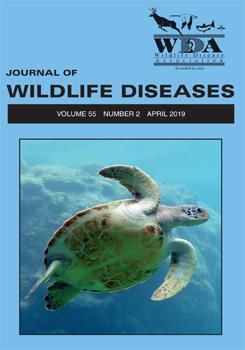Knowledge of animal visitation to locations where species aggregate is valuable for evaluating potential pathways of inter- and intraspecific transmission of infectious diseases. There is no research evaluating the potential of wallows created by invasive wild pigs (Sus scrofa) as locations of transmission of infectious diseases. We monitored wild pig wallows by using trail cameras to determine the frequency with which wild pigs and native vertebrate species visited wallows and to characterize these interactions for their potential for disease transmission. We placed cameras from 20 June 2016 to 21 September 2016 at 16 individual wallows within 10 wallowing sites. Wild pigs of both sexes visited wallows frequently (115 total visits) for varying durations and exhibited wallowing and drinking behavior. We also observed 12 native mammalian and avian wildlife species using wallows at various frequencies (165 total visits). Of particular interest, nine of these species were observed drinking from wallows. Given the high frequency of wild pig visits to wallows and the drinking behavior they and native wildlife species exhibited, these locations might have an important role in transmission of diseases.
How to translate text using browser tools
9 April 2019
Animal Visitation to Wild Pig (Sus scrofa) Wallows and Implications for Disease Transmission
Kevin D. Eckert,
David A. Keiter,
James C. Beasley
ACCESS THE FULL ARTICLE

Journal of Wildlife Diseases
Vol. 55 • No. 2
April 2019
Vol. 55 • No. 2
April 2019
disease transmission
invasive
pathogen
Sus scrofa
wallow
wild pigs
wildlife




